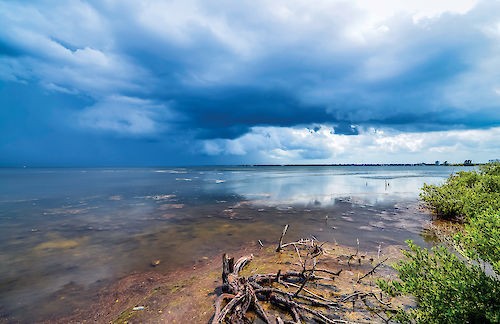Northern Estuaries
The Northern Estuaries includes the Caloosahatchee River Estuary, St. Lucie Estuary, and Loxahatchee River Estuary. The Caloosahatchee River Estuary is on the Gulf coast and the St. Lucie Estuary and Loxahatchee River Estuary are on the Atlantic coast of south Florida. Although these three estuaries vary in size and geomorphology, all have been historically altered in the volume, distribution, circulation, and temporal patterns of freshwater inflows from canals, urban development, and agricultural development in the region. Due to the demands of flood control following wet season rains and tropical storm events such as hurricanes, extreme high flows of freshwater from the watershed and regulatory releases from Lake Okeechobee can cause these brackish water systems to become fresh for extended amounts of time, which causes significant impacts to ecological resources. Conversely, water supply demands may result in extreme low inflows during the dry season, especially during drought years, which causes higher salinities that brackish water species cannot survive. Restoration projects in the region aim to regulate freshwater inflows and establish beneficial salinity regimes by creating additional water storage and allowing greater flexibility in watershed and Lake Okeechobee operations. (Photo of Lagoon Landscape by Leesa Souto used with permission)
Other Northern Estuaries Regional Pages:
Return to Regions Main Page

